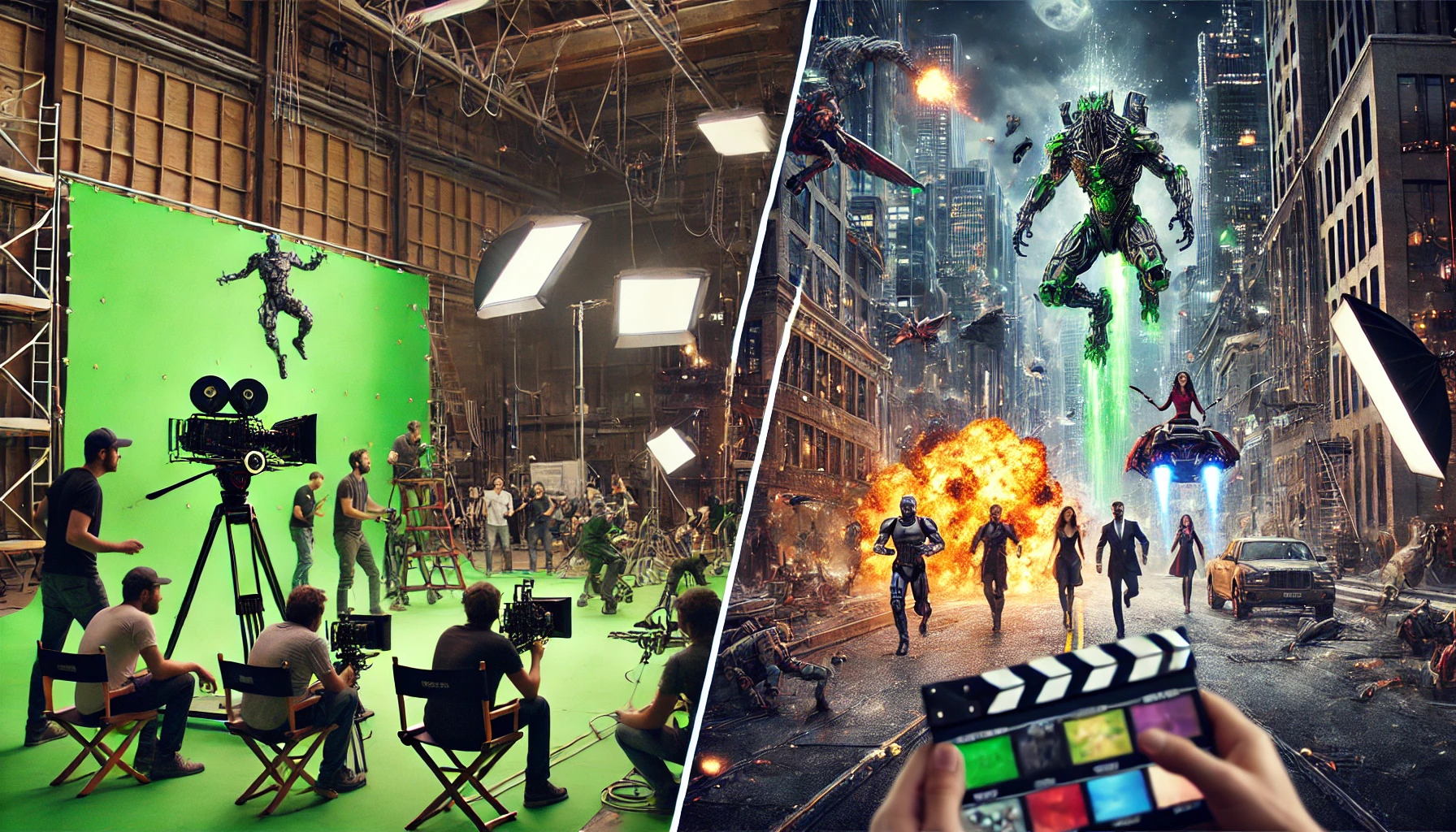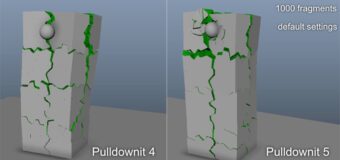Have you ever been completely immersed in a movie, your heart racing as a dragon swoops down from the screen, gasped in awe at the vast scenes of a fantastical alien world, or marveled at the detailing of a piece of your favorite superhero’s armor? The magic of your favorite movies isn’t just about captivating stories and talented actors; it’s about the incredible world of visual effects that breathe life into the impossible.
Movies have always relied on special effects to make the experience better. From the inspiring illusions of Georges Méliès’ early movies to the stop-motion animation that brought creatures like King Kong to life, filmmakers have constantly pushed the boundaries of what’s visually possible. But the rise of VFX and CGI has brought in a new era of movie magic.
We’ll dive into the secrets behind some of your favorite movie scenes and reveal to you if they’re real or not. We’ll talk about the advanced techniques VFX artists use, the challenges they face in creating believable visuals, and the incredible artistry that goes into making the impossible seem real.
The Matrix (1999)

The Wachowski siblings directed the groundbreaking science fiction movie “The Matrix” in 1999. “Bullet time” technology, a technique that captures a sequence of still images from multiple cameras arranged in a circular array around the action, revolutionized movie making with this movie. When played back in sequence, it creates the illusion of time slowing down while the camera moves around the frozen action, allowing for visually stunning and dynamic action sequences.
The use of CGI and VFX in “The Matrix” redefined the possibilities of visual storytelling and set a new standard for action moviemaking, paving the way for future advancements in digital moviemaking techniques. It won the Academy Award for Best Visual Effects.
Pirates of the Caribbean: Dead Man’s Chest (2006)

The terrifying Kraken, with its huge tentacles and scary look, was entirely CG-generated. Its movements were carefully animated to create a sense of awe-inspiring fear.
Team used CG a lot in this movie with Renderman and Houdini. The Flying Dutchman’s crew and Davy Jones, the antagonist, were entirely computer-generated. A new motion capture system called “Imocap” was developed to capture the nuanced performance of Bill Nighy, who played Davy Jones.
The realistic portrayal of Davy Jones and his crew, with their barnacle-covered skin and grotesque features, made the fantasy world appear real. The movie earned an Academy Award nomination for Best Visual Effects.
Interstellar (2014)

Double Negative created visuals in Autodesk Maya of black holes, wormholes, and space travel for this Christopher Nolan movie. People praised Interstellar’s visuals for their scientific accuracy and realistic portrayal of space phenomena.
Paul Franklin led the movie’s visual effects team, which combined practical effects, miniatures, and CGI to create immersive space environments and cosmic events. The black hole, Gargantua, in particular, got a lot of praise for being scientifically accurate and visually appealing.
The docking sequence is one of the best examples of how well real effects and CGI work together. In this scene, Matthew McConaughey portrays Cooper, who tries to dock the Endurance spaceship with the spinning space station. As the spaceship spins out of control, putting the lives of the crew at risk, the tension is obvious. Combining real effects such as the rotating set and spaceship models with CGI improvements creates a stunning and engaging experience for the viewers. The Academy Award for Best Visual Effects nominated it in 2014.
Mad Max: Fury Road (2015)

High-octane action scenes with the War Rig and other modified cars moving depended heavily on CG animation to make the stunts look better and give the impression of going very fast. Chroma key technology was used to combine actors into digitally created settings, which made it possible to mix live-action footage with CGI parts without any problems.
“Mad Max: Fury Road” is renowned for its realistic stunts and effects created in Houdini, often enhancing these elements with CGI, such as incorporating more debris or enhancing the power of blasts. The movie employed digital matte painting to enlarge the on-set settings. This made the landscapes look bigger and gave the movie a better sense of scale.
The movie’s visuals achieved a raw, practical feel despite the CG elements. It won six Academy Awards, including Best Production Design and Best Costume Design.
Avatar Way Of The Water (2022)
Avatar: The Way of Water takes the incredible CG and VFX of the original Avatar movie to a whole new level, particularly when it comes to one key element: water. The Way of Water is no longer just a backdrop; it’s a full-fledged character. Wētā FX, the VFX studio behind the movie, spent years of research into creating realistic CG water. This involved simulating fluid dynamics, light refraction, and surface interactions to create water that looked real.
The movie extends the use of performance capture technology from the first movie. Actors shot their scenes underwater in huge performance capture tanks, making it possible for the Na’vi characters to swim and interact with the water in a way that felt real.
Like the original, a big part of this one was making sure that CG elements and live-action video worked together smoothly so that viewers could really feel like they were in Pandora’s oceans. Again, it won the Academy Award for Best Visual Effects.
Gozilla Minus One (2023)

Godzilla Minus One stands out for achieving award-winning visuals on a surprisingly small scale. The movie defied expectations by creating a staggering 610 VFX shots with a crew of only 35 artists. Director Takashi Yamazaki and VFX supervisor Kiyoko Shibuya led this tight-knit team, working with a mere $15 million, a significant amount compared to other movies in its category that year.
The movie took a unique approach, drawing inspiration from 1990s-style practical effects with a modern twist. Accurate physical models and clever composition created a distinct visual style that resonated with audiences. Redshift: Used for rendering, particularly for managing the extensive detail and high polygon count of the Godzilla model. This helped achieve the realistic textures and lighting required for the film.
Godzilla Minus One’s success proves that groundbreaking VFX doesn’t require a huge budget or team. The movie was as good as big-budget Hollywood movies because it had artistic vision, creative use of limited resources, and a focus on moments that had an effect first. This innovative approach landed them the Academy Award for Best Visual Effects, a first for the Godzilla franchise.
What Makes The Magic Possible
While these feats in cinematic developments might inspire you, it’s important to note that creating stunning CGI visuals require immense computing power. The creation of such detailed and lifelike CGI characters in these movies required advanced software and artistic skill that can take days, weeks or even months to achieve.
Rendering complex 3D scenes featuring these characters can be computationally intensive, often requiring hours or even days of processing time on high-performance computers or render farms—which consist of large clusters of interconnected computers, which were employed to distribute the computational workload efficiently.
To achieve the level of detail and complexity seen in these movies, extensive rendering processes using render farms were necessary to allow animation companies keep up with demanding production schedules while maintaining the high quality of visual effects.
As technology advances, CG will get even better, making it easier to integrate with real life action. The lines between reality and fiction will continue to blur, creating even more immersive and awe-inspiring cinematic experiences.




Leave a Reply